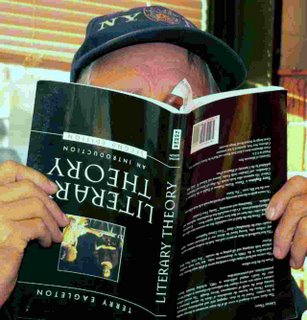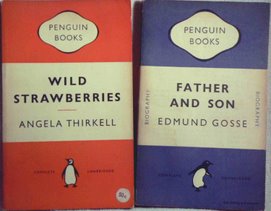Carolyn Burke's Biography of Mina Loy - Jacket # 5
You can read more about Mina Loy in Jacket #5.
Part One of 'Cheap Priceless Editions' Summer Reading Picks for the Southern Hemisphere . . . (While the rest of us curl up under blankets an freeze . . .)
CLICK HERE
TEASER -- quoted from JACKET 5
For us, decades later, her name opens the door to an era of spirited exchanges between American and Continental vanguards. It conjures up smoky art classes in prewar Montparnasse, costume balls at Mabel Dodge's Florentine villa, Futurist soirées where enraged audiences hurl vegetables at the stage, Dadaesque poetry readings, gossipy visits with Gertrude Stein and Alice B. Toklas, dinners in Brancusi's studio among half-finished blocks of marble -- all scenes that reveal the shapes of the modernist imagination.
/END TEASER
I FIRST HEARD of Mina Loy when I was living in Paris twenty years ago. A fin-de-siècle English painter, she had made her name, quite unexpectedly, as a writer of vers libertine -- the sort of free verse that in the 1910s seemed to lead to free love. To the modernists, she was the first to chart the sensibility of the 'new woman.' Ezra Pound praised her intellect and her refusal to traffic in sentiment, the staple, he judged, of women poets. (Her poems bristled with such intelligence that Pound coined the term 'logopoeia' to describe them.) William Carlos Williams, Hart Crane, and E. E. Cummings all learned from her example. In the 1920s she was as well known as Marianne Moore, the other female modernist with whom she was frequently compared.
In her many years abroad, Mina Loy also befriended Gertrude Stein, John Reed, Djuna Barnes, James Joyce, Constantin Brancusi, Peggy Guggenheim, Tristan Tzara, Natalie Barney, Ford Madox Ford, Marcel Duchamp, and Man Ray, to name a few of her 'crowd.' She makes brief, brilliant appearances in expatriate memoirs: one catches sight of her in New York during the Great War, in the hectic avant-garde of postwar Berlin, at the opening of a risqué Paris nightclub or a clandestine Surrealist film showing in the twenties. By the mid-thirties, however, she had disappeared, and her poems were out of print.



No comments:
Post a Comment